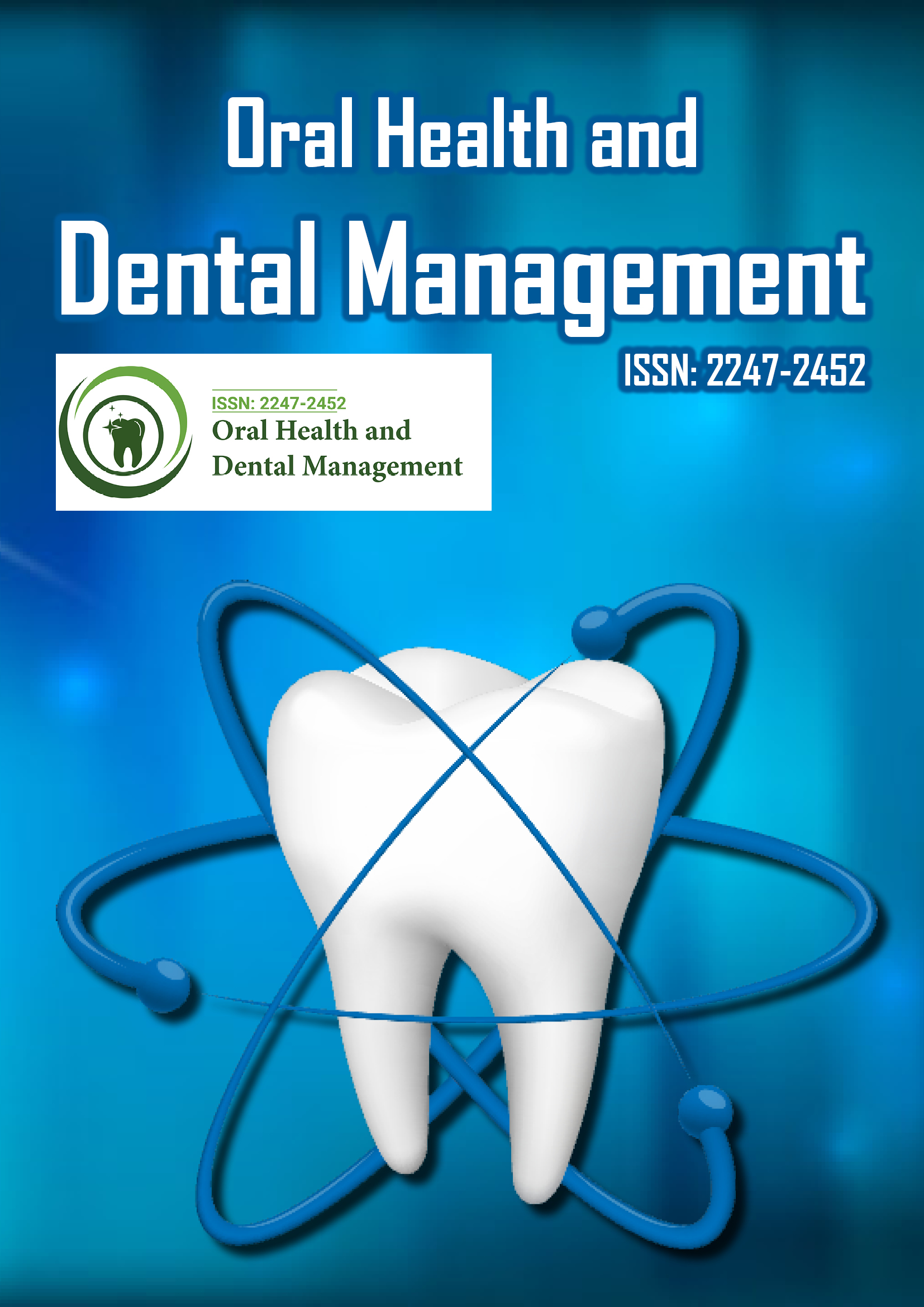Indexed In
- The Global Impact Factor (GIF)
- CiteFactor
- Electronic Journals Library
- RefSeek
- Hamdard University
- EBSCO A-Z
- Virtual Library of Biology (vifabio)
- International committee of medical journals editors (ICMJE)
- Google Scholar
Useful Links
Share This Page
Journal Flyer

Open Access Journals
- Agri and Aquaculture
- Biochemistry
- Bioinformatics & Systems Biology
- Business & Management
- Chemistry
- Clinical Sciences
- Engineering
- Food & Nutrition
- General Science
- Genetics & Molecular Biology
- Immunology & Microbiology
- Medical Sciences
- Neuroscience & Psychology
- Nursing & Health Care
- Pharmaceutical Sciences
Commentary Article - (2024) Volume 23, Issue 2
Preserving Dental Health: The Role and Benefits of Root Canal Therapy
Lena Juliette*Received: 27-May-2024, Manuscript No. OHDM-24-26082; Editor assigned: 31-May-2024, Pre QC No. OHDM-24-26082 (PQ); Reviewed: 14-Jun-2024, QC No. OHDM-24-26082; Revised: 21-Jun-2024, Manuscript No. OHDM-24-26082 (R); Published: 28-Jun-2024, DOI: 10.35248/2247-2452. 24.23.1110
Description
Root canal treatment, often referred to simply as a root canal, is a widely utilized procedure in modern dentistry expected at recovering teeth that might otherwise require extraction. This treatment involves problems about the pulp, the innermost portion of the tooth. Deep decay, several dental treatments, chips, and cracks can all cause the pulp to become infected or inflammatory. Getting rid of the infection and protecting the cleaned tooth from further bacterial growth are the main goals of a root canal. A tooth’s structure consists of three layers: dentin, which is slightly softer than enamel, the hard outer layer called enamel, and the pulp, which is located inside. The pulp, which extends from the tooth’s crown to the tip of the roots where it joins with the surrounding tissues, is made up of nerves, blood vessels, and connective tissue. If the pulp infection or inflammation is not treated quickly, it can result in severe discomfort and the development of an infection. After the diseased pulp is removed, the tooth’s interior is cleaned and disinfected, and the tooth is then filled and sealed.
The process starts with an extensive examination, which frequently includes X-rays, to find out the root canals and evaluate the severity of the infection. Local anaesthetic is used to numb the area surrounding the damaged tooth to ensure the patient’s comfort during the process. To keep the teeth dry and saliva-free, a rubber dam is typically positioned around it. Drilling an access hole into the tooth is the first step taken by the endodontist, or dentist, who specializes in root canal therapy. The damaged pulp tissue is then extracted from the pulp chamber and root canals using tiny devices. The filling process is made easier by the careful cleaning and shaping of the canals. The canals are cleaned and any remaining dirt is flushed out using irrigation solutions. To stop more infections, this cleaning procedure is essential. After cleaning and shaping, the canals are filled with a rubber-like substance and a biocompatible substance, usually gutta-percha. To guarantee an entire seal, the gutta-percha is placed into the canals and sealed with adhesive cement.
To seal the access hole until the tooth can be treated with a crown or permanent filling, a temporary filling is frequently used. Following a root canal treatment, the tooth must be restored. To preserve the treated tooth and bring it back to full function, a crown or permanent filling is required. The patient can then eat and converse normally because the restored tooth functions just like any other tooth. Crowns and fillings can be made of a variety of materials, including as porcelain, gold, or composite resins, each of which has unique advantages in terms of aesthetics and longevity. Technology developments in dentistry have greatly increased the efficacy and efficiency of root canal therapy. Compared to traditional X-rays, digital radiography produces detailed images with less radiation exposure. Advanced irrigation methods and ultrasonic tools improve root canal cleansing and shape. In addition, improved sight of the root canal system is made possible by the use of dental operating microscopes, ensuring more complete treatment.
Conclusion
In conclusion, root canal therapy is an essential dental operation that can preserve severely damaged or infected teeth. Dentists can remove pain and illness while maintaining the original tooth by extracting the infected pulp, cleaning and disinfecting the canals, and sealing the tooth. Dental technological developments continue to enhance the efficacy of this procedure, ensuring that patients get the best care available. Root canal therapy is a dependable treatment for dental health problems since maintaining good oral hygiene and scheduling routine dental checkups are essential to the treated tooth’s lifetime.
